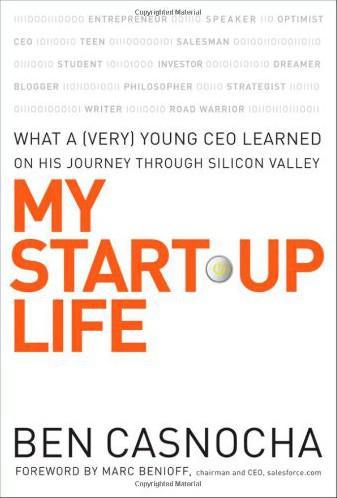
Cryptoassets: The Innovative Investor's Guide to Bitcoin and Beyond: The Innovative Investor's Guide to Bitcoin and Beyond
by
Chris Burniske
and
Jack Tatar
Published 19 Oct 2017
While it’s hard to predict where blockchain technology currently falls on Gartner’s Hype Cycle (these things are always easier in retrospect), we would posit that Bitcoin is emerging from the Trough of Disillusionment. At the same time, blockchain technology stripped of native assets (private blockchain) is descending from the Peak of Inflated Expectations, which it reached in the summer of 2016 just before The DAO hack occurred (which we will discuss in detail in Chapter 5). Cryptoassets beyond bitcoin are at different points between the Innovation Trigger and the Trough of Disillusionment. These differ because they came to life at different points after bitcoin and many are still emerging.
…
The progression of a new technology, and the way it evolves as it gains mental mindshare, is at the core of Gartner’s Hype Cycle for Emerging Technologies (Gartner is a leading technology research and advisory firm),17 which displays five common stages of technology.18 • Innovation Trigger • Peak of Inflated Expectations • Trough of Disillusionment • Slope of Enlightenment • Plateau of Productivity First is the Innovation Trigger that brings the technology into the world. While not very visible, just as Bitcoin wasn’t visible in the early years of its life, word spreads and expectations grow. Over time the murmurs gain momentum, building into a crescendo that is Gartner’s second stage, the Peak of Inflated Expectations.
…
As companies sprout to life and attempt to transition ideas into reality, shifting from proof-of-concepts to at-scale implementations, it frequently turns out that implementing a new disruptive technology in the wild is much harder than anticipated. The new technology must integrate with many other systems, often requiring a wide-reaching redesign. It also requires retraining of employees and consumers. These difficulties slowly push the technology into the Trough of Disillusionment, as people lament that this technology will never work or is too difficult to deal with. When enough people have given up, but the loyal keep working in dedication, the technology begins to rise again, this time not with the irrational exuberance of its early years, but instead with a sustained release of improvements and productivity.

The Data Revolution: Big Data, Open Data, Data Infrastructures and Their Consequences
by
Rob Kitchin
Published 25 Aug 2014
2010: Report on Enterprise Server Information. Global Information Industry Center, UC San Diego. http://hmi.ucsd.edu/pdf/HMI_2010_EnterpriseReport_Jan_2011.pdf (last accessed 1 October 2012). Sicular, S. (2013) ‘Big data is falling into the trough of disillusionment’, Gartner, 22 January, http://blogs.gartner.com/svetlana-sicular/big-data-is-falling-into-the-trough-of-disillusionment/ (last accessed 26 February 2013). Siegel, E. (2013) Predictive Analytics. Wiley, Hoboken, NJ. Sigala, M. (2005) ‘Integrating customer relationship management in hotel operations: managerial and operations implications’, International Journal of Hospitality Management, 24(3): 391–413.
…
Five years later it had become a buzzword, commonly used in business circles and the popular media, with regular commentaries in broadsheet newspapers, such as the New York Times and Financial Times, and feature pieces and sections in popular and science magazines such as The Economist, Time, Nature, and Science. Such was its prevalence and associated boosterism that Gartner’s had already declared by January 2013 that it had moved along the hype cycle from ‘peak of inflated expectation’ to ‘trough of disillusionment’ (Sicular 2013), with some evangelists already declaring ‘big data’ dead as a meaningful term, having become too wideranging and woolly in definition (e.g., de Goes 2013), some early adopters struggling to convert investment into return, and others voicing scepticism as to its potential benefits.

Ludicrous: The Unvarnished Story of Tesla Motors
by
Edward Niedermeyer
Published 14 Sep 2019
“Tesla could be worth ‘multiples’ of current $50 billion market cap by 2020, fund manager says.” CNBC, May 19, 2017. https://www.cnbc.com/2017/05/19/tesla-stock-valuation-driverless-taxi.html 175Gartner released its latest “hype cycle” analysis: Mike Ramsey. “Autonomous Vehicles Fall Into the Trough of Disillusionment . . . But That’s Good.” Forbes, August 14, 2018. https://www.forbes.com/sites/enroute/2018/08/14/autonomous-vehicles-fall-into-the-trough-of-disillusionment-but-thats-good/#3b5a3c6e7b5a 176John Krafcik publicly admitted that autonomous vehicles might never work in all locations: Sam Abuelsamid. “Transition to Autonomous Cars Will Take Longer Than You Think, Waymo CEO Tells Governors.”
…
The challenge of self-driving car development was not simply convincing the public that a car could “drive itself,” which could theoretically be achieved with as little hardware as a brick placed on the accelerator, but by making a car drive itself safely. As this reality sank in, the rest of the autonomous-drive space dialed back expectations. In the summer of 2018, the research and advisory company Gartner released its latest “hype cycle” analysis, which showed that autonomous-drive technology had passed peak hype and was entering the “trough of disillusionment.” Increasingly, the entire goal of a Level 5 vehicle, capable of full autonomy anywhere, was being dismissed in favor of Level 4 vehicles, which operate fully autonomously but only in a limited “geofenced” area. By restricting the operational design domain of an autonomous car to a specific thoroughly mapped area and optimizing the system for the conditions found there, you could reduce the possible scope of edge cases to a manageable level.

Bold: How to Go Big, Create Wealth and Impact the World
by
Peter H. Diamandis
and
Steven Kotler
Published 3 Feb 2015
Back in the late 1960s, when folks like writer Stewart Brand (who coined the term personal computer) first started discussing the idea of the PC, it was with an incredible amount of “change the world” fervor.3 Then the machines actually arrived, and all most people could do was play Pong. This was the trough of disillusionment, cultural deception at its finest. But imagine being able to take your knowledge of what computers can do today back to the early 1980s—what bold entrepreneurial business opportunities might this have unlocked for you? Hype Cycle Indicators Gartner Hype Cycle Indicators Source: www.gartner.com Recognizing when a technology is exiting the trough of disillusionment and beginning to rise up the slope of enlightenment is critical for entrepreneurs. Reading an exponential curve like a road map, experts watch for a number of indicators—the development of best practices, supplier proliferation, secondary financings, among others.
…
After a novel technology is introduced and begins gaining momentum, we tend to envision it in its final form—seriously overinflating our expectations for both its developmental timetable and its short-term potential. Invariably, when these technologies fail to live up to the initial hype—usually in that gap between deception and disruption on our list of the Six Ds—public sentiment for the technology falls into the trough of disillusionment. And this is where a great many of the technologies discussed in chapter 3 now sit. But when technologies are in the trough, we are again swayed by the hype (this time, the negative hype) and consistently fail to believe they’ll ever emerge, thus missing their massively transformative potential.

My Start-Up Life: What A
by
Ben Casnocha
and
Marc Benioff
Published 7 May 2007
Before they can say without a wink that they are, in fact, “big.” 149 150 MY START-UP LIFE >> In a business, once you’ve discovered you have something and need to figure out how big of a something it is, your cocktail party buzzword manual probably instructs: Tell new acquaintance: “My business has grown tremendously and now I’m really trying to, you know, really trying to get some scale. We’re trying to see if we can scale the thing and become a massive company.” Supplement statement with hand gestures that mimic the volume of a balloon as it is inflated with air. Gartner calls this phase of growth “trough of disillusionment,” but since five-syllable words like “disillusionment” can pose challenges to the avid wine-drinking schmoozer, most of us refer to it as the “long, hard slog.” It means your company has some deals, but is generally doing less than $5M in revenue, and hasn’t necessarily figured out how to surpass that level.
…
I cite Marc Benioff and Carlye Adler’s The Business of Changing the World (New York: McGraw-Hill, 2006). Chapter 13.0: The Product Development Process The sidebar “Dare to Be Mediocre: Good Is the Enemy of Perfect” contains ideas by Auren Hoffman. Chapter 15.0: The Long, Hard Slog The reference to Gartner, Inc.’s “trough of disillusionment” and the kind of company that gets stuck in the long, hard slog comes from my friend Seth Levine on his blog: http://sethlevine.typepad.com/ vc_adventure/2006/01/when_should_you.html. Andy Sack’s blog post on “three questions each management team should ask themselves” is at http://asack.typepad.com/a_sack_of_seattle/ 2006/10/the_meeting_tha.html. 188 ENDNOTES “Getting More Good Revenue and Less Bad Revenue” is based on an idea discussed on Will Price’s blog: http://www.willprice.blogspot.com/ 2006/09/how-pure-is-your-model.html.

Green Swans: The Coming Boom in Regenerative Capitalism
by
John Elkington
Published 6 Apr 2020
Even so, on the day I showed up on the doorstep to meet him, his company filed for bankruptcy. 2.Peak of Inflated Expectations: After a period of intensifying interest, speculation, and early-stage investment, we often see rapidly inflating expectations of what a given technology can achieve in the short term. This is often spurred by increasingly breathless media coverage of the gathering tempo of technology and company failures—in contrast to the rapid breakthrough successes expected by employees, customers, and investors. 3.Trough of Disillusionment: Now come the hard times. As early expectations of breakthrough success are dashed, the wider world loses interest. For those businesses that are venture capital funded, we often see second or third rounds of funding to keep the show on the road, with investors imposing ever-tougher conditions on the innovators, owners, and management.
…
See business leaders, working with toxic assets, 72 Toyota, 135 The Transformation of Growth (Generation Investment Management), 217 trees, as sustainability power tools, 254–255 triple bottom line (TBL or 3BL), 54 Novo Nordisk embrace of, 155, 157, 158–159 placebo buttons, 43–46 recall of concept, 12–16, 29–33, 213 usefulness of, 153, 248 Trough of Disillusionment stage, Gartner Hype Cycle, 174 true value, 58 Trump, Donald, 84, 126–127, 131, 196, 204 Twitter, 168–169 U U-bend, 3–4, 4f, 37, 210 Uber, 215 Ugly Ducklings. See also Black Swans; Gray Swans; Green Swans defined, 3, 11 disruptive technologies, 175–182 Gartner Hype Cycle, 173–175 Green versus Black Swans, 182–186, 188 Midgley syndrome, 171–173 overview, 166–167 unintended consequences, 167–171 Umicore, 215 UN Environment Inquiry into a Sustainable Finance System, 243–244 UN Global Compact, 34–36 UN Sustainable Development Goals, 19, 56–57, 148, 232–233 Unburnable Carbon (Campanale), 243 Underwood, Barbara, 67 Unearthed, 146 United States exponential leaders in, 237–240 and “gradually, then suddenly” transitions, 79 Green New Deal, 204 space junk contributed by, 114 Superfund legislation, 136 unmanned aircraft, 178–179 The Unnamable Present (Calasso), 192–193 “Unthinking Modernity” (Klee), 109 Upheaval (Diamond), 195 urban greening, 255 urban mobility, 178 urbanization, 210 US Forest Service, 254–255 US Office of Technology Assessment (OTA), 182–184, 185 V Vale, 69–70 valuation, market, 206 value, 47, 58–61, 149, 149f Venezuela, 7–8 Vestager, Margrethe, 236 Victor private jet company, 245–246 Vision 2050 project, WBCSD, 229–230 Volans, 25–27, 34–36, 147, 223, 234 Volkswagen (VW), 129–130, 214 W Waksman, Selman, 103 Walker, Robert J., 22 Wartzman, Rick, 14 waste exports/imports, 134 wasting assets, 72 water, bottled, microplastics in, 96 Waygood, Steve, 205–207, 210 WCKD ticker symbol, 91 Webber, Melvin M., 81 Weeden, Brian, 111 West, Geoffrey, 239 Western diet, 98–102 White Swans, 22 The Whole Earth Catalog (magazine), 231 wicked problems Anthropocene epoch, 86–89 antibiotics, 102–108 calories, 98–102 carbon economy, 108–111 characteristics of, 81–84 defined, 80–81, 91 “gradually, then suddenly” transitions, 78–80 overview, 76–78 plastics, 92–97 space junk, 111–116 super wicked problems, 84–86 tracking in financial markets, 90–91 Wikipedia, 6 Wilde, Oscar, 58 Winners Take All (Giridharadas), 13 Wired (magazine), 114–115, 169, 180–181 wireless industry, 125–126 Wolf, Martin, 49–50 woolly mammoth, restoration of, 232 World Business Council for Sustainable Development (WBCSD), 229–230 World Economic Forum (WEF), 175–176, 177, 178, 179, 181, 182 World Health Organization (WHO), 100, 105, 106 world of abundance, and technology, 37, 170 World Trade Organization, 119 World War II, 204 World Wildlife Fund (WWF), 200–201, 224 worldviews, differing, 190–193 X X facility, Google, 35–36, 83, 240 XPRIZE Foundation, 35–36, 83 XR (Extinction Rebellion), 189, 225–226 Y YITU Technology, 168 Yu, Kongjian, 136 Z Zeitz, Jochen, 54 Zhexembayeva, Nadya, 198–199, 247 ZIF-8 molecule, 244 Zuckerberg, Mark, 53, 130

Bitcoin: The Future of Money?
by
Dominic Frisby
Published 1 Nov 2014
Either that or he was designing some new alt currency – some altcoins were rising at over a thousand per cent per day. ‘Banks, governments, they’re irrelevant now,’ these upstarts declared. I suggest that in late 2013 we hit the peak of the hype cycle – the peak of inflated expectations. Now Bitcoin is somewhere in the ‘trough of disillusionment,’ just like the internet in 2001. The price has fallen. There have been thefts. Some of the companies involved have gone bankrupt. The challenge now is for all those start-ups to make their product or service work. They have to take Bitcoin from a great idea and a technology that works to something with much wider ‘real world’ use.

Geek Sublime: The Beauty of Code, the Code of Beauty
by
Vikram Chandra
Published 7 Nov 2013
There is a reigning cult of overwork in the industry—the legend of the rock-star programmer usually has him coding sixteen hours a day, while simultaneously contributing to open-source projects, blogging, conferencing, and somehow managing to run a start-up—and this ideal has led many an aspirant to burnout, complete with techie thousand-yard-stare, clinical depression, outbursts of anger, and total disinterest in programming. This trough of disillusionment is so deep that for many, the only way to emerge from it is to leave the industry altogether, which rewards a few with fame and dazzling amounts of money, but treats the many as disposable cogs in its software production machine. The endless cycle of idea and action, endless invention, endless experiment, all this knowledge of motion takes its toll, leaves behind a trail of casualties.

Makers
by
Chris Anderson
Published 1 Oct 2012
It just took common platforms to make the dream of hyperefficient B2B online marketplaces a reality. This is the way all successful technological revolutions work. The Gartner Group describes this boom-bust-boom trajectory as the “Hype Cycle” of tech-driven change. After the “Peak of Inflated Expectations,” there is the “Trough of Disillusionment.” Then comes the “Slope of Enlightenment,” and finally the “Plateau of Productivity.” We’ve been through the first three already. Now we’re enjoying the last. By the time a business process is too boring to comment on, it’s probably starting to actually work. So while the rest of us are having our heads turned by the latest buzzy social media thing, sites like MFG.com are quietly going about their work of turbocharging the world’s real economic engine, making stuff faster, cheaper, better.

Junk DNA: A Journey Through the Dark Matter of the Genome
by
Nessa Carey
Published 5 Mar 2015
A company called Gartner created a graphic that shows how new technologies are perceived. It is known as the Hype Cycle. At first everyone is very excited – ‘the peak of inflated expectations’. When the new tech fails to transform everything about your life there is a crash leading to the ‘trough of disillusionment’. Eventually, everyone settles down, there is a steady growth in rational understanding and finally a productive plateau is reached. With something like ENCODE this cycle is extraordinarily compressed, because of the polarisation from the most vocal groups. Those scientists with inflated expectations are operating at exactly the same time as those in the trough.

We Are Electric: Inside the 200-Year Hunt for Our Body's Bioelectric Code, and What the Future Holds
by
Sally Adee
Published 27 Feb 2023
Galvani Biosciences is still plugging away, but with replication results that don’t make any headlines. Now, part of this is just the inevitable rollercoaster of the hype cycle. First, you get a big splashy announcement of a new possibility and everyone is very excited. Then the grind of basic research sets in, and there’s a long trough of disillusionment because the new hot devices aren’t ready immediately. Eventually, positive results start to emerge from the long tail of clinical research, and slowly the once-hyped revolution is integrated into routine care at your doctor’s office, and fades into the background of everyday life. And in fact there are signs that this is starting to happen—in 2022 Galvani put the first autoimmune disorder device into a clinical trial.7 So maybe electroceuticals are tracing this classic innovation curve.

Boom: Bubbles and the End of Stagnation
by
Byrne Hobart
and
Tobias Huber
Published 29 Oct 2024
In Bitcoin’s case, phase two began in July 2010, when an article about Bitcoin Version 0.3 appeared on the popular technology website Slashdot. Shortly thereafter, Mt. Gox, the first bitcoin exchange, launched. With speculation running wild, the price of one bitcoin rose to $31.90 in June 2011. After that, Bitcoin hit the third phase of the hype cycle, the trough of disillusionment. Its price decreased rapidly before bottoming out in April 2013. This was followed by further price swings, driven less by interest in Bitcoin itself than in efforts to use the currency as a safe haven. For instance, one price spike was driven by a financial crisis in Cyprus that fueled distrust of banking.

The Digital Doctor: Hope, Hype, and Harm at the Dawn of Medicine’s Computer Age
by
Robert Wachter
Published 7 Apr 2015
Appreciating the need to address work flow and culture does not get kludgy technology off the hook. In 1995, the consulting group Gartner coined the term Hype Cycle to describe the trajectory of many technologies. The cycle commences with the introduction of a new technology. Then the hype begins, with a “peak of inflated expectations” preceding a swift descent into the dreaded “trough of disillusionment.” Some technologies die there; the ones destined to be successful climb the “slope of enlightenment” to reach their final stage: a “plateau of productivity.” The cycle has proved to be a useful model: many technologies, particularly those complex technical advances that require complementary innovations and reengineering of the work, traverse all its stages.